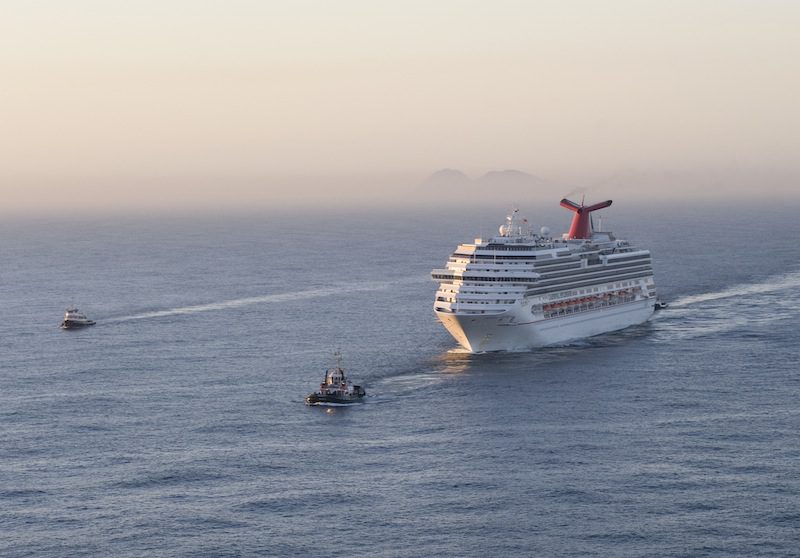Spotlight on Liftboats: What They Do & The Dangers They Pose
Picture a vessel that can sail to a jobsite, “plant” three or four giant steel legs on the seabed, and then lift its entire hull clear of the waves—creating a...

SAN DIEGO – The Carnival Cruise Ship Splendor is towed into San Diego Bay, Nov. 11, 2010. The cruise ship became disabled after a fire in the engine room, Monday, Nov. 8, 2010. U.S. Coast Guard photo.
The U.S. Coast Guard on Monday released the final report on the investigation into the 2010 fire onboard Carnival Cruise Lines’ ship, Carnival Splendor.
On November 8, 2010, an engine room fire knocked out power to the vessel while off the coast of Mexico with 3,299 passengers and 1,167 crew. The vessel was towed to the port of San Diego three days later and there were no injuries or fatalities, but the incident kicked off a spate of similar incidents that have since plagued Carnival Cruise Lines and parent Carnival Corporation.
SEE ALSO: Carnival to Spend $300 Million on Fleet Upgrades
The Coast Guard report released today said that the vessel suffered a major mechanical failure in the number five diesel generator, resulting in the fire. The post-casualty analysis of the incident has revealed that the installed Hi-Fog (water mist) system for local protection took 15 minutes minutes to activate after the initial fire started, which allowed the fire to spread to the overhead cables and eventually cause the loss of power. This delay was the result of a bridge watchstander resetting the fire alarm panel on the bridge, the Coast Guard said.
While the fire was eventually extinguished, the failure of the installed CO2 system and the poor execution of the firefighting plan contributed to the ineffectiveness of the crew’s firefighting effort, the Coast Guard said.
As a result of this incident and the initial findings by investigators, the Coast Guard since issued two safety alerts which covered the operation, testing and maintenance of CO2 systems. Meanwhile, Carnival took steps to evaluate fire safety systems, firefighting doctrine and training, and procedures for inspection and testing of installed safety systems. Specifically, Carnival has removed the 40-second time delay from the automatic activation sequence for the Hi-Fog system and has implemented short- and long-term solutions to rectify the problems associated with the activation of the CO2 system, the Coast Guard report said.
The Coast Guard made five safety recommendations in the report, which were addressed to Carnival, Lloyd’s Register, Panama and the Coast Guard, addressing the conditions onboard the Carnival Splendor that contributed to this casualty, as well as the problems with the CO2 system installation on all Dream class vessels. In addition, the recommendations to the Coast Guard address the need for improved guidance to enhance the conduct and evaluation of fire drills.
The Coast Guard performed the safety investigation of the incident on behalf of the Carnival Splendor’s flag state, Panama, and included representatives from Panama, the National Transportation Safety Board, Carnival Cruise Lines (including their legal representatives and technical experts), Wartsila (Splendor’s engine manufacturer) and various other specialists.
The Full Report can be downloaded Coast Guard’s Homeport page.

Sign up for gCaptain’s newsletter and never miss an update

Subscribe to gCaptain Daily and stay informed with the latest global maritime and offshore news


Stay informed with the latest maritime and offshore news, delivered daily straight to your inbox
Essential news coupled with the finest maritime content sourced from across the globe.
Sign Up